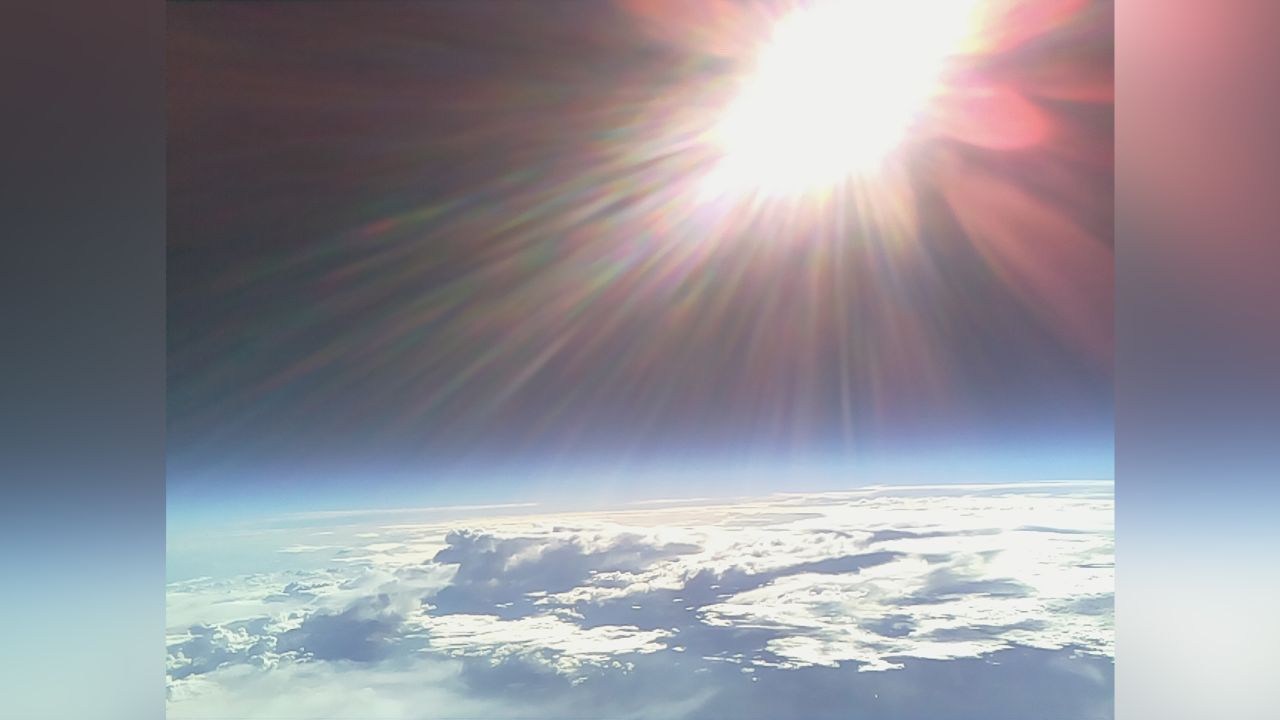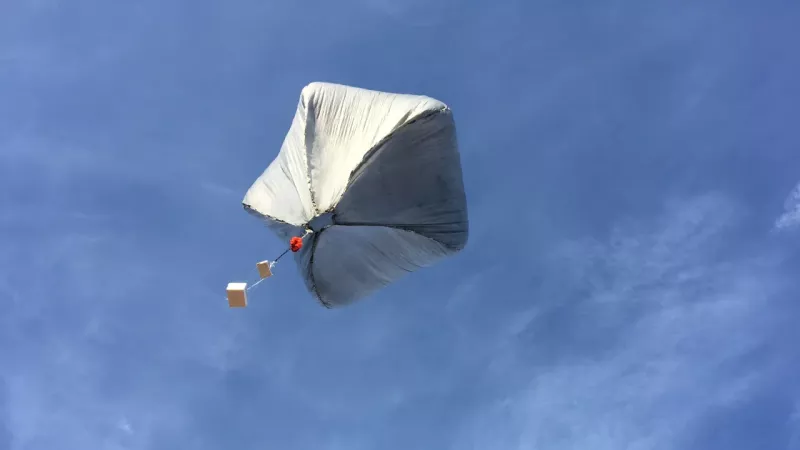Giant solar balloons were sent 70,000 feet up in the air to record sounds of Earth’s stratosphere — and the microphones picked up some unexpected sounds. The stratosphere is the second layer of Earth’s atmosphere, and its lower level contains the ozone layer that absorbs and scatters the sun’s ultraviolet radiation, according to NASA. The thin, dry air of the stratosphere is where jet aircraft and weather balloons reach their maximum altitude, and the relatively calm atmospheric layer is rarely disturbed by turbulence. Daniel Bowman, principal scientist at Sandia National Laboratories in New Mexico, was inspired in graduate school to explore the soundscape of the stratosphere after being introduced to the low-frequency sounds that are generated by volcanoes. Known as infrasound, the phenomenon is inaudible to the human ear.
Bowman and his friends had previously flown cameras on weather balloons “to take pictures of the black sky above and the Earth far below” and successfully built their own solar balloon. He proposed attaching infrasound recorders to balloons to record the sounds of volcanoes. But then he and his adviser Jonathan Lees of the University of North Carolina, Chapel Hill, “realized that no one had tried to put microphones on stratospheric balloons for half a century, so we pivoted to exploring what this new platform could do,” Bowman said. Lees is a professor of Earth, marine and environmental sciences who researches seismology and volcanology. The balloons can take sensors twice as high as commercial jets can fly.
“On our solar balloons, we have recorded surface and buried chemical explosions, thunder, ocean waves colliding, propeller aircraft, city sounds, suborbital rocket launches, earthquakes, and maybe even freight trains and jet aircraft,” Bowman said via email. “We’ve also recorded sounds whose origin is unclear.” The findings were shared Thursday at the 184th Meeting of the Acoustical Society of America in Chicago. A recording shared by Bowman from a NASA balloon that circled Antarctica contains infrasound of colliding ocean waves, which sounds like continual sighing. But other crackles and rustling have unknown origins.
In the stratosphere, “there are mysterious infrasound signals that occur a few times per hour on some flights, but the source of these is completely unknown,” Bowman said.
Building solar balloons
Bowman and his collaborators have conducted research using NASA balloons and other flight providers, but they decided to build their own balloons, each spanning about 19.7 to 23 feet (6 to 7 meters) across. The supplies can be found at hardware and pyrotechnic supply stores, and the balloons can be assembled on a basketball court. “Each balloon is made of painter’s plastic, shipping tape, and charcoal dust,” Bowman said via email. “They cost about $50 to make and a team of two can build one in about 3.5 hours. One simply brings it out to a field on a sunny day and fills it up with air, and it will carry a pound of payload to about 70,000 ft.”
The charcoal dust is used inside the balloons to darken them, and when the sun shines on the dark balloons, the air inside them warms up and becomes buoyant. The inexpensive and easy DIY design means the researchers can release multiple balloons to collect as much data as possible.

This view from one of Sandia National Laboratories' solar-powered hot air balloons was taken at a height of about 13 miles (21 kilometers) above Earth's surface.
“Really, a group of high schoolers with access to the school gym could build a solar balloon, and there’s even a cellphone app called RedVox that can record infrasound,” Bowman said. Bowman estimated that he launched several dozen solar balloons to collect infrasound recordings between 2016 and April of this year. Microbarometers, originally designed to monitor volcanoes, were attached to the balloons to record low-frequency sounds. The researchers tracked their balloons using GPS, since they can travel for hundreds of miles and land in inconvenient locations.
The longest flight so far was 44 days aboard a NASA helium balloon, which recorded 19 days worth of data before the batteries on the microphone died. Meanwhile, solar balloon flights tend to last about 14 hours during the summer and land once the sun sets.
The advantage of the high altitude reached by the balloons means that noise levels are lower and the detection range is increased — and the whole Earth is accessible. But the balloons also present challenges for researchers. The stratosphere is a harsh environment with wild temperature fluctuations between heat and cold. “Solar balloons are a bit sluggish, and we’ve wrecked a few on bushes when trying to launch them,” Bowman said. “We’ve had to hike down into canyons and across mountains to get our payloads. Once, our Oklahoma State colleagues actually had a balloon land in a field, spend the night, and launch itself back in the air to fly another whole day!”
Lessons learned from multiple balloon flights have somewhat eased the process, but now the greatest challenge for researchers is identifying the signals recorded during the flights. “There are many flights with signals whose origin we do not understand,” Bowman said. “They are almost certainly mundane, maybe a patch of turbulence, a distant severe storm, or some sort of human object like a freight train — but it’s hard to tell what is going on sometimes due to the lack of data up there.” Sarah Albert, a geophysicist at Sandia National Laboratories, has investigated a “sound channel” — a conduit that carries sounds across great distances through the atmosphere — located at the altitudes Bowman studies. Her recordings have captured rocket launches and other unidentified rumblings.




